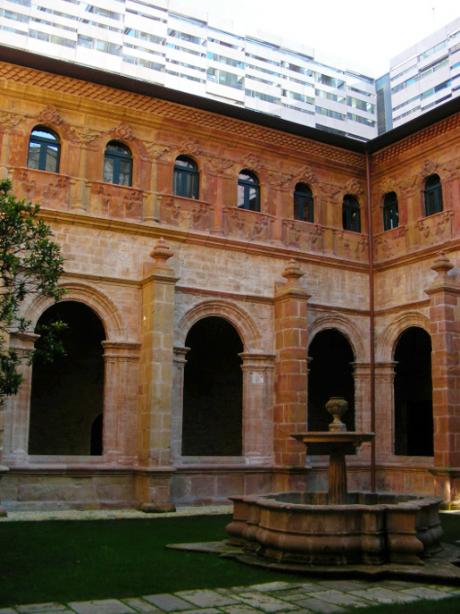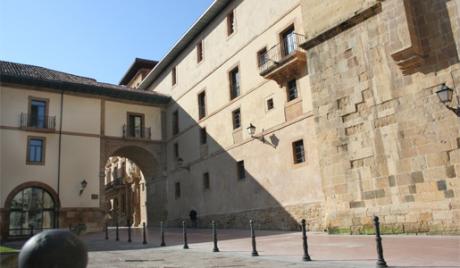In the 1670 regularized the main facade of the monastery, with splendid baroque front today. The harsh climate of Asturias led the monks to decide to close the upper gallery of the cloister, which gave access to the cells. Thus, this gallery was closed with a wall and windows and the ground floor with large windows under the direction of Juan Agustin Cean Bermudez, in 1775. Also during the eighteenth century built a service courtyard, now Place of Father Feijoo. Manuel Reguera this work culminated in 1794. It installed the stables, a barn, a slaughterhouse, the file, several rooms of fun and new cells.
As impressive building reflects, ultimately, the economic power of the monastery, one of the richest of Asturias to be favored by the constant donation of goods and property. Lived here over half a century Jerome Feijoo (Orense, 1676-1764), one of the earliest and most illustrious Spanish Enlightenment, abbot of the monastery for thirty years. A few years lived with him Fray Martin Sarmiento, who was professed devotion and promoter of culture and archeology in Galicia.
After the confiscation of church property in 1837 the building became property of the Diputación de Oviedo, becoming administrative units. In 1934 the old cloister of San Vicente was declared a historic-artistic monument. From 1939 began the restoration of the same under the direction of Luis Menéndez Pidal, architect, curator of monuments in the northwest, and Manuel Bobes (father and son).
The convent church adjoining the cloister was segregated as a parish of St. Mary of the Court and, in turn, in 1969 the service bays of the courtyard, the plaza de Feijoo, housed the Faculty of Philosophy and Letters, today Psychology.
From 1952 to 2003 houses the Archaeological Museum of Asturias. This year was closed to undertake the renovation and extension of it that were undertaken by the Ministry of Culture project and addresses of architects Fernando Pardo Calvo and Bernardo Garcia Tapia




